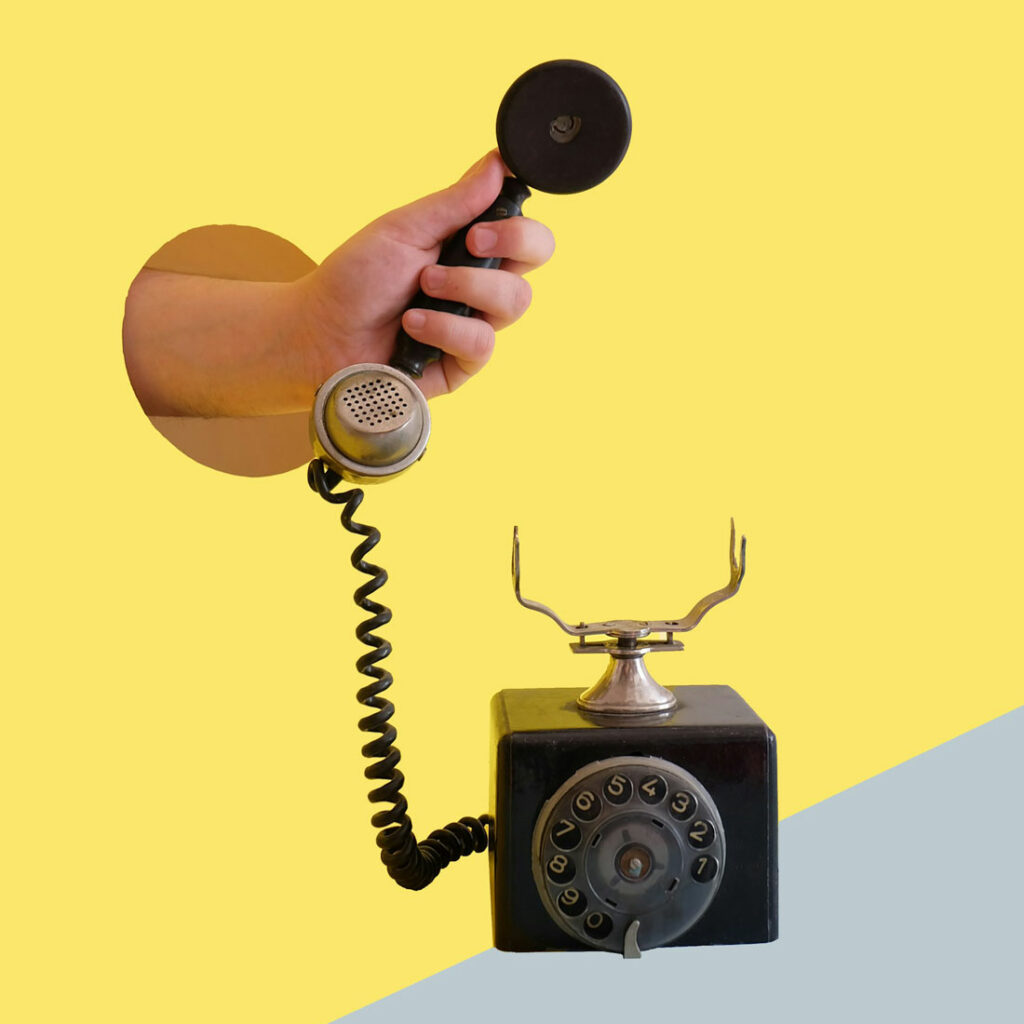16/09/2022
Markus, was genau verbirgt sich hinter dem Begriff hybride Kundenkommunkation?
Interview mit Markus Kesting, Sales Manager, Sematell GmbH

16/09/2022
In Contact Centern ist momentan die Hölle los! Dadurch, dass örtliche Servicecenter derzeit meistens geschlossen haben, laufen Kundenanfragen überwiegend über die Online-Kanäle ein. Rund 25 Millionen Anfragen gilt es deutschlandweit täglich zu händeln – manuell ist das nicht machbar! Eine Lösung: Hybride Kundenkommunikation. Was ist das und wann lohnt sich der Einsatz? Das erklärt Markus Kesting, Sales Manager im Interview.
Markus, was genau verbirgt sich hinter dem Begriff „Hybride Kundenkommunikation“?
Kurz gesagt ist damit die Interaktion von Menschen, also Mitarbeitern, und Künstlicher Intelligenz (KI) gemeint.
Im Kundenservice geht es hauptsächlich darum, möglichst viele Anfragen möglichst schnell und trotzdem qualitativ hochwertig und präzise zu beantworten. Die KI kommt dann beispielsweise bei Inhaltserkennung, Kategorisierung, Datenextraktion und wiederkehrenden Standardaufgaben zum Einsatz. Werden solche Tätigkeiten automatisiert bearbeitet, entlastet das die Mitarbeiter bei manuellen Tätigkeiten.
Wo bietet sich der hybride Einsatz von Mensch und Maschine besonders gut an?
Überall dort, wo Aufgaben anfallen, die automatisiert bearbeitet werden können. Wenn zum Beispiel eine E-Mail-Anfrage eingeht, kann die Software mit Hilfe der KI den E-Mail-Text auslesen und die Kerninformationen herausfiltern. So erkennt die KI, um welchen Themenbereich es sich handelt und ordnet die Anfrage der richtigen Kategorie zu.
Standardanfragen wie eine Änderung von Rechnungs- oder Lieferadressen können von der KI vollautomatisiert bearbeitet werden, das heißt, hier wird kein Mitarbeiter mehr benötigt.
Wieso übernimmt die KI nicht einfach alle anfallenden Arbeiten?
Wie weit die Automatisierung gehen kann, hängt natürlich vom jeweiligen Arbeitsbereich ab. Eine Dunkelverarbeitung – also vollautomatisierte Prozesse, wie sie etwa in der Energiewirtschaft eingesetzt werden, funktionierte sehr gut bei sich wiederholenden Aufgaben wie beispielsweise Adressdatenänderungen. Bei individuellen Anfragen bleibt das „Team Mensch“ auch weiterhin unverzichtbar. Der Mitarbeiter, in dem Fall der Fachadministrator, steuert über Workflows den automatisierten Prozess und begleitet gewissermaßen die KI. Würde sie selbstständig „lernen“, würde sie Fehler immer wieder reproduzieren und die Präzision, etwa bei der Themenerkennung, darunter leiden. Im Bereich des maschinellen Lernens kommt daher dem Supervised Learning nach wie vor große Bedeutung zu. Und der Supervisor ist und bleibt erst einmal ein Mensch.
Wie Einfach kann guter Kundenservice sein?
Jetzt ganz einfach!
Unverbindlich. Schnell. Individuell.
Kannst du uns ein Beispiel für eine hybride Kundenkommunikation geben?
Ein guter Anwendungsbereich ist die Energiewirtschaft. Wenn es um Abschlagszahlungen oder Tarifänderungen geht, kann die Software KI-basiert das Thema und den jeweiligen Kunden identifizieren und kategorisieren, mit vorhandenen Daten, etwa im CRM oder ERP-System abgleichen und die Antwort auf die Kundenanfrage prüfen und vorformulieren. Erst ganz zum Schluss dieses automatisierten Prozesses kommen Mitarbeiter ins Spiel, um die Antwort zu überprüfen und final freizugeben.
Wie lässt sich eigentlich messen, ob die hybride Kundenkommunikation erfolgreich ist?
Ganz einfach: Individuell und persönlich von den Mitarbeitern. Werden die Call Center Mitarbeiter von eintönigen Routineaufgaben entlastet, die bei Energieanbietern nun mal den Großteil der Kundenkommunikation ausmachen, haben sie mehr Zeit für komplexere Anfragen. Arbeitsprozesse wie Tarifänderungen sind häufig erklärungsbedürftig und erfordern einen persönlichen Austausch zwischen Mitarbeiter und Kunden. ReplyOne hält den Servicemitarbeitern den Rücken frei, damit sie sich genau solchen Aufgaben widmen können.
Die Kunden müssen also nicht mehr lange auf eine persönliche Beratung warten. Und auch die Mitarbeiterzufriedenheit steigt signifikant, denn wer arbeitet nach der 10.
Wie lässt sich eigentlich messen, ob die hybride Kundenkommunikation erfolgreich ist?
Ganz einfach: Individuell und persönlich von den Mitarbeitern. Werden die Call Center Mitarbeiter von eintönigen Routineaufgaben entlastet, die bei Energieanbietern nun mal den Großteil der Kundenkommunikation ausmachen, haben sie mehr Zeit für komplexere Anfragen. Arbeitsprozesse wie Tarifänderungen sind häufig erklärungsbedürftig und erfordern einen persönlichen Austausch zwischen Mitarbeiter und Kunden. ReplyOne hält den Servicemitarbeitern den Rücken frei, damit sie sich genau solchen Aufgaben widmen können.
Die Kunden müssen also nicht mehr lange auf eine persönliche Beratung warten. Und auch die Mitarbeiterzufriedenheit steigt signifikant, denn wer arbeitet nach der 10.
Zählerstandsmeldung und der 20. Mitteilung einer neuen Bankverbindung noch motiviert?
ReplyOne schafft also eine Win-Win-Situation für Mitarbeiter und Kunden – und wenn alles gut läuft, sieht man das auch am Umsatz.
Markus präsentiert live auf der CCW unsere Response Management-Lösung für die hybride Kundenkommunikation.
Wie Einfach kann guter Kundenservice sein?
Jetzt ganz einfach!
Unverbindlich. Schnell. Individuell.
Ähnliche Beiträge



